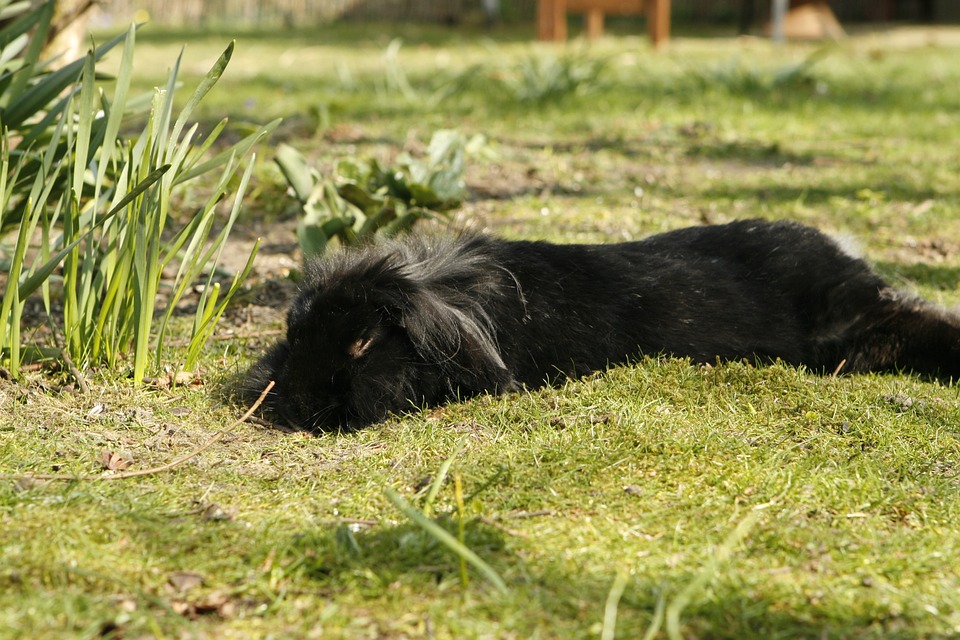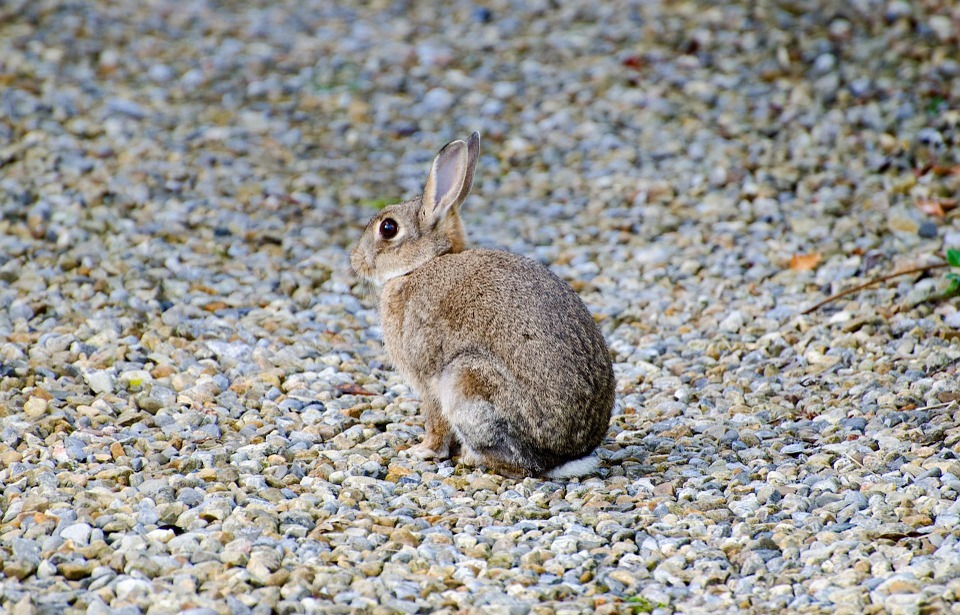The Easter bunny, a beloved figure in modern society, brings joy and excitement to Easter celebrations around the world. But why are rabbits, specifically, linked to this holiday? This article unravels the fascinating journey of the Easter bunny, exploring its origins, symbolism, and evolution through history.
Part 1: Ancient Roots: Pagan Traditions and the Symbolism of Fertility

1.1. Eostre: The Anglo-Saxon Goddess of Spring
Long before Christianity, the Anglo-Saxons celebrated a festival dedicated to Eostre, a goddess associated with spring, dawn, and fertility. This festival, held in April, marked the arrival of spring and the promise of new life. The celebration likely involved rituals and offerings to Eostre, seeking her blessing for a bountiful harvest and prosperity.
1.2. The Hare: A Symbol of Abundance and Renewal
Hares, closely related to rabbits, were revered in ancient cultures as symbols of fertility and abundance. Their rapid reproduction, often producing multiple litters a year, made them a potent symbol of new life and the cycle of nature. Ancient art and mythology often depicted hares in association with springtime celebrations, representing the return of life and the burgeoning of nature.
1.3. Eggs: Universal Symbols of Rebirth
Eggs, a staple of ancient spring festivals, carried a universal symbolism of rebirth and renewal. Across cultures, eggs represented the potential for new life, echoing the natural cycle of life and death. This association with fertility and new life intertwined with the symbolism of the hare, further strengthening the connection between these creatures and spring celebrations.
Part 2: The Christian Influence: A Symbolic Shift

2.1. The Resurrection of Christ: A New Meaning for Spring
The Easter holiday, commemorating the resurrection of Jesus Christ, aligned with the themes of rebirth and renewal celebrated in ancient spring festivals. The Christian Church, seeking to integrate existing cultural practices into its doctrine, adopted many pagan traditions, reinterpreting them within a Christian framework.
2.2. The Rabbit as a Symbol of Hope and Renewal
The rabbit, already a symbol of fertility and new life, became associated with the resurrection of Christ. Its ability to reproduce quickly and bring forth new life resonated with the Christian message of resurrection, offering hope and promise for the future. This symbolic shift transformed the rabbit from a symbol of natural abundance to a symbol of spiritual renewal and hope.
Part 3: The Emergence of the Easter Bunny: From Folklore to Tradition
3.1. Medieval Europe: The Origins of the Easter Bunny Legend
The origins of the Easter bunny can be traced back to medieval Europe, where stories of rabbits delivering eggs to children on Easter Sunday began to circulate. These stories likely emerged from the existing association between rabbits and fertility, and the Christian celebration of resurrection.
3.2. The 16th Century: The Easter Bunny in German Folklore
The Easter bunny, known as the "hase" in German, became a popular figure in German folklore during the 16th century. Stories of a "hase" delivering eggs to children gained popularity, solidifying the rabbit's role as a bringer of Easter joy and gifts.
3.3. The 19th Century: The Easter Bunny's Arrival in America
German immigrants brought the Easter bunny tradition to the United States in the 19th century. As the tradition spread, the Easter bunny became a widely recognized figure, bringing with it the association of egg hunts and Easter baskets.
Part 4: The Easter Bunny's Enduring Popularity: From Legend to Cultural Icon
4.1. The Easter Bunny: A Symbol of Joy and Celebration
The Easter bunny continues to be a beloved figure in modern society, representing joy, celebration, and the arrival of spring. It embodies the spirit of renewal and optimism associated with the Easter holiday.
4.2. The Easter Bunny's Excitement for Children
The Easter bunny's association with egg hunts and gift-giving makes it a source of excitement for children, particularly during Easter celebrations. The thrill of searching for hidden eggs and the anticipation of receiving treats from the Easter bunny make the holiday a memorable and joyful experience for young ones.
4.3. The Easter Bunny: A Cultural Icon
The Easter bunny has become a significant cultural icon, appearing in countless books, movies, and television shows. Its image has been adopted by companies to sell everything from candy to toys to clothing, further solidifying its cultural presence.
Part 5: The Easter Bunny's Cultural Variations: A Global Phenomenon
5.1. The Easter Bunny Around the World
While the Easter bunny is a global phenomenon, its representation and symbolism can vary slightly across cultures. In some countries, like Germany and Austria, it is depicted as a hare, reflecting its historical association with fertility and spring celebrations.
5.2. The Easter Bunny's Companions: Enhancing the Symbolism
In some cultures, the Easter bunny is accompanied by other figures, such as the Easter chick or the Easter lamb, further enhancing the symbolism of new life and rebirth. These companions add to the festive atmosphere and reinforce the themes of hope and renewal associated with Easter.
Part 6: The Easter Bunny's Evolution: From Legend to Marketing
6.1. Commercialization of the Easter Bunny
The Easter bunny has become heavily commercialized, with companies using its image to sell everything from candy to toys to clothing. This commercialization has contributed to the evolution of Easter celebrations, transforming it from a religious holiday into a secular celebration often focused on consumerism and the Easter bunny's associated activities.
6.2. The Easter Bunny's Impact on Modern Celebrations
The commercialization of the Easter bunny has played a significant role in shaping modern Easter celebrations. While the Easter bunny remains a symbol of hope and new life, its commercial presence has shifted the focus of the holiday for many, emphasizing consumerism and the tradition of egg hunts.
Part 7: The Symbolism of the Easter Bunny: A Multifaceted Representation
7.1. The Easter Bunny as a Symbol of New Life and Rebirth
The Easter bunny, with its connection to the rabbit's prolific breeding abilities, embodies the cycle of life, growth, and renewal. Its arrival coincides with the season of spring, a time of rebirth and renewal in nature. This association reinforces the symbolism of hope and new beginnings, connecting it to the resurrection of Christ.
7.2. The Easter Bunny as a Symbol of Joy and Celebration
The Easter bunny is often depicted as a playful and cheerful figure, bringing joy and excitement to Easter celebrations. Its association with egg hunts and the tradition of leaving treats for children reinforces its role as a bringer of happiness and festivities.
7.3. The Easter Bunny as a Symbol of Family and Tradition
Easter celebrations often involve family gatherings, strengthening the Easter bunny's role as a symbol of family and tradition. The Easter bunny's presence in childhood memories contributes to its lasting symbolic significance, creating cherished moments and traditions that are passed down through generations.
Part 8: The Easter Bunny in Art and Literature: A Cultural Presence
8.1. The Easter Bunny in Children's Literature: Instilling Wonder and Joy
The Easter bunny has been featured in countless children's books, often as a protagonist or supporting character, bringing to life its symbolism of joy, hope, and new life. These stories help to teach children about the traditions and symbolism associated with the holiday, instilling in them a sense of wonder and excitement.
8.2. The Easter Bunny in Visual Art: Capturing the Whimsical and Charming
Artists have depicted the Easter bunny in a variety of artistic mediums, capturing its whimsical and charming nature. Paintings, sculptures, and illustrations portray the Easter bunny in a variety of styles, reflecting changing cultural and societal influences.
8.3. The Easter Bunny in Popular Culture: A Beloved Figure in Entertainment
The Easter bunny has made appearances in numerous movies and television shows, often as a comedic character or as a symbol of Easter festivities. Its image has also been used in music and songs, adding to its cultural significance and reinforcing its place in popular culture.
Part 9: FAQs: Answering Common Questions About the Easter Bunny
9.1. What is the origin of the Easter bunny?
The Easter bunny's origins can be traced back to pre-Christian Germanic folklore, where Eostre, a goddess associated with spring and fertility, was celebrated. The hare, a symbol of fertility, played a significant role in these celebrations, and this connection evolved into the Easter bunny's association with fertility and new life. As Christianity spread, the rabbit became a symbol of the resurrection of Christ, further solidifying its role in Easter celebrations.
9.2. Why are eggs associated with the Easter bunny?
Eggs, symbolizing rebirth and new life, have been associated with springtime festivals for centuries. They were a staple of pagan rituals dedicated to fertility and renewal. The Christian Church adopted and adapted many pagan traditions, including the egg, aligning it with the themes of resurrection and rebirth celebrated during Easter. The Easter bunny, already associated with fertility and new life, became a carrier of these eggs, reinforcing the symbolism of hope and renewal.
9.3. Why is the Easter bunny sometimes depicted as a hare?
The Easter bunny's depiction as a hare is rooted in ancient folklore and mythology, where hares were often considered symbols of fertility and new life due to their prolific breeding habits. The association between hares and rabbits is also closely related, as they share similar characteristics and habitats. In some cultures, like Germany and Austria, the Easter bunny is specifically portrayed as a hare, reflecting its historical association with fertility and spring celebrations.
9.4. Is the Easter bunny a real animal?
The Easter bunny, as we know it, is a mythical figure, a symbol of hope, joy, and new life. However, rabbits and hares, the animals that inspire the Easter bunny, are real animals with unique characteristics and ecological roles.
9.5. What are some traditions associated with the Easter bunny?
The Easter bunny's most well-known tradition is the egg hunt, where children search for hidden eggs, symbolizing the bounty of spring. Other traditions include leaving carrots for the Easter bunny as a treat, decorating Easter baskets with colorful eggs and bunny-themed decorations, and celebrating with Easter-themed meals and family gatherings.
9.6. How does the Easter bunny influence modern celebrations?
The Easter bunny, as a beloved cultural icon, significantly influences modern Easter celebrations. It has become heavily commercialized, with companies using its image to sell Easter-themed products and create a festive atmosphere. It also contributes to the evolution of Easter celebrations, transforming it from a religious holiday into a secular celebration often focused on consumerism and the Easter bunny's associated activities.
9.7. What is the significance of the Easter bunny in different cultures?
While the Easter bunny is a global phenomenon, its representation and symbolism can vary slightly across cultures. In some countries, like Germany and Austria, it is depicted as a hare, while in others, like the United States, it is typically portrayed as a rabbit. The Easter bunny's companions and the traditions associated with it also vary, reflecting cultural influences and local customs.
Everyone is watching
-

Do Rabbits Lay Eggs? (The Surprising Truth)
OTHER TYPES OF PETSThis article will unravel the common misconception that rabbits lay eggs, exploring the fascinating world of r...
-

Can Rabbits Eat Grapes? A Guide to Safe Rabbit Treats
OTHER TYPES OF PETSThis comprehensive guide will explore the safety and suitability of grapes for rabbits, providing detailed inf...
-

What's a Group of Rabbits Called? (A Comprehensive Guide)
OTHER TYPES OF PETSThis article delves into the fascinating world of rabbits, exploring the various terms used to describe a grou...
-

Predators That Hunt Rabbits: A Guide to Natural Enemies
OTHER TYPES OF PETSI've always been fascinated by the circle of life, that delicate dance between predator and prey. Growing up ...
-

Are Rabbits Nocturnal Animals?
OTHER TYPES OF PETSThe question of whether rabbits are nocturnal animals is a fascinating one, with a surprisingly complex answer...
